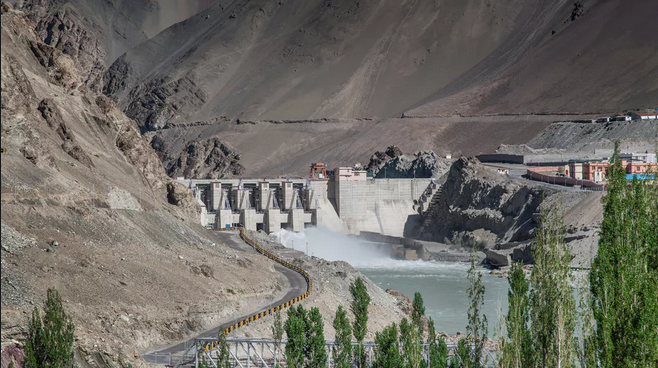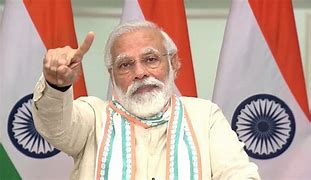Feature
India decides to stop water supply of three rivers flow into Pakistan

Baghpat: Continuing its tough stance in the wake of Pulwama terror attack, India on Thursday decided to stop its share of water from the three eastern rivers –the Beas, Ravi and Sutlej-to Pakistan.
“Under the leadership of (Prime Minister Narendra Modi), our government has decided to stop our share of water which used to flow to Pakistan. We will divert water from eastern rivers and supply it to our people in Jammu and Kashmir and Punjab,” Water Resources Minister Nitin Gadkari said in a tweet.
In another tweet, he said the construction of a dam had started at Shahpur-Kandi on Ravi river. Moreover, the Ujh project will store India’s share of water for use in Jammu and Kashmir and the balance water will flow from the second Ravi-Beas Link to provide water to other basin states.
He said all the above projects were declared as the National projects.
India’s decision comes on top of other actions like withdrawing Most Favoured Nation status to Pakistan and slapping a 200 percent duty on all imports from Pakistan in the wake of the Pulwama suicide bombing that killed 40 CRPF troopers and which was claimed by the Pakistan-based Jaish-e-Mohammed (JeM).
India decides to stop share of water which use to flow inside Pakistan:
India has also sent enough message to Pakistan that it will not be business as usual and that the February 14 terror attack would be avenged.
Meanwhile, speaking at a public meeting in Baghpat, Gadkari said that after partition India got three rivers but their water were flowing to Pakistan.
“… Water will be diverted to Yamuna. It means, there will be more water in Yamuna,” he said.
Under the Indus Waters Treaty, a water-distribution treaty between India and Pakistan, control over the water flowing in three “eastern” rivers of India – the Beas, the Ravi and the Sutlej with the mean flow of 33 million acre-feet (MAF) – was given to India.
While control over the water flowing in three “western” rivers of India – the Indus, the Chenab and the Jhelum with the mean flow of 80 MAF – was given to Pakistan.
Entertainment
Meghalaya Reserves Legalized Gambling and Sports Betting for Tourists

The State Scores Extra High on Gaming-Friendly Industry Index
Meghalaya scored 92.85 out of 100 possible points in a Gaming Industry Index and proved to be India’s most gaming-friendly state following its recent profound legislation changes over the field allowing land-based and online gaming, including games of chance, under a licensing regime.
The index by the UK India Business Council (UKIBC) uses a scale of 0 to 100 to measure the level of legalisation on gambling and betting achieved by a state based on the scores over a set of seven different games – lottery, horse racing, betting on sports, poker, rummy, casino and fantasy sports
Starting from February last year, Meghalaya became the third state in India’s northeast to legalise gambling and betting after Sikkim and Nagaland. After consultations with the UKIBC, the state proceeded with the adoption of the Meghalaya Regulation of Gaming Act, 2021 and the nullification of the Meghalaya Prevention of Gambling Act, 1970. Subsequently in December, the Meghalaya Regulation of Gaming Rules, 2021 were notified and came into force.
All for the Tourists
The move to legalise and license various forms of offline and online betting and gambling in Meghalaya is aimed at boosting tourism and creating jobs, and altogether raising taxation revenues for the northeastern state. At the same time, the opportunities to bet and gamble legally will be reserved only for tourists and visitors.
“We came out with a Gaming Act and subsequently framed the Regulation of Gaming Rules, 2021. The government will accordingly issue licenses to operate games of skill and chance, both online and offline,” said James P. K. Sangma, Meghalaya State Law and Taxation Minister speaking in the capital city of Shillong. “But the legalized gambling and gaming will only be for tourists and not residents of Meghalaya,” he continued.
To be allowed to play, tourists and people visiting the state for work or business purposes will have to prove their non-resident status by presenting appropriate documents, in a process similar to a bank KYC (Know Your Customer) procedure.
Meghalaya Reaches Out to a Vast Market
With 140 millions of people in India estimated to bet regularly on sports, and a total of 370 million desi bettors around prominent sporting events, as per data from one of the latest reports by Esse N Videri, Meghalaya is set to reach out and take a piece of a vast market.
Estimates on the financial value of India’s sports betting market, combined across all types of offline channels and online sports and cricket predictions and betting platforms, speak about amounts between $130 and $150 billion (roughly between ₹9.7 and ₹11.5 lakh crore).
Andhra Pradesh, Telangana and Delhi are shown to deliver the highest number of bettors and Meghalaya can count on substantial tourists flow from their betting circles. The sports betting communities of Karnataka, Maharashtra, Uttar Pradesh and Haryana are also not to be underestimated.
Among the sports, cricket is most popular, registering 68 percent of the total bet count analyzed by Esse N Videri. Football takes second position with 11 percent of the bets, followed by betting on FIFA at 7 percent and on eCricket at 5 percent. The last position in the Top 5 of popular sports for betting in India is taken by tennis with 3 percent of the bet count.
Local Citizens will Still have Their Teer Betting
Meghalaya residents will still be permitted to participate in teer betting over arrow-shooting results. Teer is a traditional method of gambling, somewhat similar to a lottery draw, and held under the rules of the Meghalaya Regulation of the Game of Arrow Shooting and the Sale of Teer Tickets Act, 2018.
Teer includes bettors wagering on the number of arrows that reach the target which is placed about 50 meters away from a team of 20 archers positioned in a semicircle.
The archers shoot volleys of arrows at the target for ten minutes, and players place their bets choosing a number between 0 and 99 trying to guess the last two digits of the number of arrows that successfully pierce the target.
If, for example, the number of hits is 256, anyone who has bet on 56 wins an amount eight times bigger than their wager.























